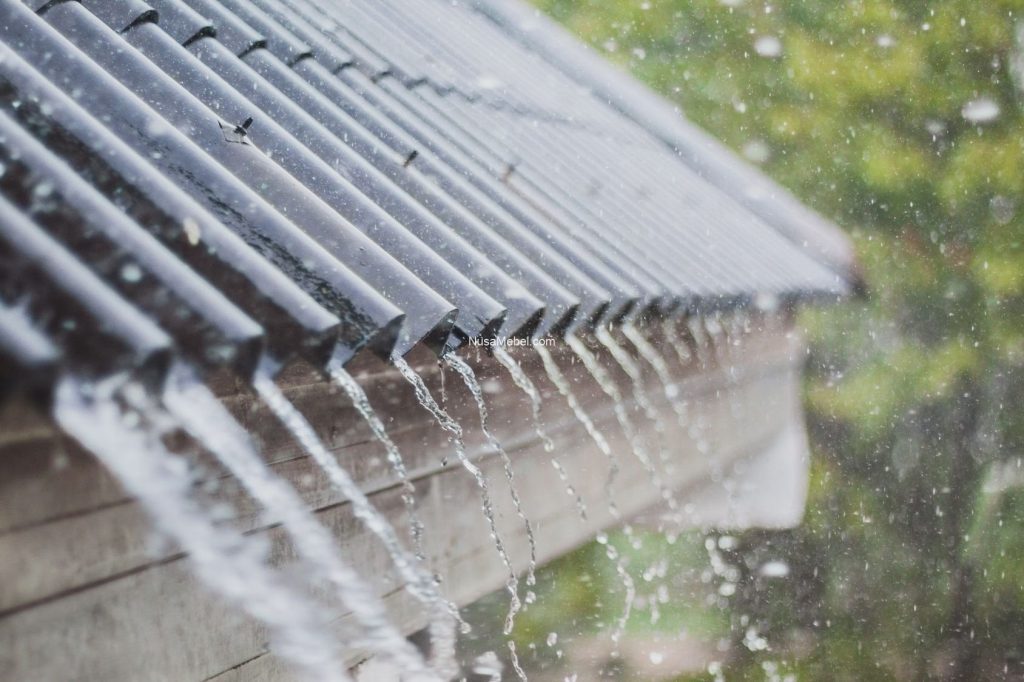The rainy season is upon us and many families are in a rush to protect their homes. After all, the Philippines is no stranger to heavy downpours, which can damage unprepared homes. To help you rain-proof your abode, here are some useful home repair tips.
Tip No. 1: Check for roof leaks
A leaking roof is arguably the biggest concern that many have this rainy season. Here, you have probably experienced frantically looking for tabos, pails, or other containers to catch the rainwater dripping from the ceiling. To avoid that scenario, you would want to locate and fix these leaks early.

When determining where the roof leaks are coming from, you need to follow the water stains on the ceiling. Often, the holes on the roof are found directly above the stains but they might also be slightly higher. Thoroughly inspect these areas for signs of damage and penetration, such as due to falling objects. You would also want to look for disrepair like protruding nails or misaligned roof sheets.
If you can’t spot the leak, a nifty trick is to use a water hose. Climb to the roof and hose it down while a helper waits inside. Start above the area that corresponds to where the leak appears and gradually move up. You will know that you are in the vicinity of the leak origin when the water starts dripping inside.
Fixing the leaks
Once you have identified the origin of the leaks, you can start patching them up. Use a quick-drying cement to ensure that it sets before the next downpour. To strengthen the patch, you can use a piece of cloth. Put the cloth on top of the cement patch and push down on it so that the sealant is thoroughly pressed into the hole. Leave the cloth to harden into the patch.
You also need to refasten GI roof sheets (yero) that have come undone. Rainwater can easily seep into the gaps between the sheets. Inspect the sheets themselves to see if they are still in good condition. Replace any sheet that has major damages. Be sure to coat the new roof sheets with anti-rust paint to protect their surfaces.
Tip No. 2: Clean your roof gutters
Another area you would want to prepare for the rainy days is your roof gutters and drains (alulod). The most common issue that you will encounter here is the buildup of debris and leaves. These can block the flow of rainwater, causing it to overflow and contribute to the leaks in the house.
Cleaning the debris is straightforward work. You just sweep the collected debris of the gutter. Make sure to sweep away from the drain to avoid the debris from falling. You can also use a trowel to scoop the larger debris like rocks and fallen fruit.

To prevent leaves from accumulating again, use a mesh screen. This will block the debris but will still let the water flow into the gutter and drain. Note that there might be smaller debris that gets through the mesh, so you will have to clear these again later.
Fixing the gutters and drains
Like the roof, your house’s gutters can suffer from leaks, which is an added headache when it rains. These leaks are often seen at the seams of the gutter sections. Patch these seams using roof sealant. To make the sealant flow more easily into the seams, you can heat it a bit before applying.
For repairing gutter holes, use a small metal sheet patch. Stick this over the hole with roofing cement and place another layer over it for added strength. If the hole is too large, you will have to cut out that section and replace it with a new one.
Tip No. 3: Flood-proof your house
Flooding is a particularly common problem for many Pinoy families. This is especially the case with those who are living in low-lying areas. As such, you would want to make sure that your home is secured against overflowing water.
To do that, you need to first ensure that the house is waterproof. Inspect your walls from top to bottom for cracks where water might seep in. You would want to pay special attention to the exterior since this is the one most exposed to the elements. Patch any gaps with cement.
You also want to make sure that doors and windows are watertight. With the former, see to it that the bottom edge makes a tight seal with the floor to prevent water from entering. You can stick a rubber sheet of the appropriate thickness on the floor to create that seal. Or you can use commercially available door seals like this one. Test both the windows and the doors to see if they close properly so that rain won’t enter during strong winds.
Creating water barriers
You would also want to make sure floodwaters don’t get to the house in the first place. Clean all the canals and drains around the house to ensure the free flow of water in them. You might want to coordinate with the local homeowners association or barangay officials for cleaning and unclogging the roadside canals.
If you live in an area prone to a significant rise in floodwaters, you should have a lot of sandbags on standby. These are useful for blocking water and diverting it away from the house. Making these sandbags is an easy task that you can do with help from other residents.

Keep your home dry and safe for the rainy season
By following the tips above, you can be sure that your home will stay dry as the rainy days become more frequent. But you should still be alert as the season can bring in other dangers. Be diligent in inspecting your house after every downpour to ensure that your repairs withstood it and will still protect you the next time it starts raining again.

